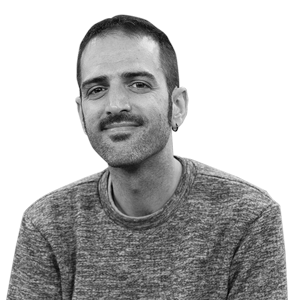Is it normal for Lamine Yamal to have a chronic injury at eighteen?
The young Barça star is battling pubalgia at the same age as Leo Messi.


BarcelonaApart from going by helicopter with his partner, the Argentine singer Nicki Nicole, Lamine Yamal has taken advantage of this international break to undertake specific training and treat the groin pain he's been suffering from. Although it's not always a disabling injury, it has diminished his performance on the pitch in recent weeks, to the point that he's been forced to miss seven official matches this season, including those with the Spanish national team. After these days of rest and recovery, Hansi Flick will have him available again for this Saturday's Barça-Girona match at Montjuïc, but the German coach knows the problem will continue to plague the Mataró winger even if he is eligible for the squad.
Since groin pain emerges and disappears like the course of the Guadiana River, his symptoms will need to be controlled with physiotherapy, but above all with hours in the gym to strengthen the affected area, sources at the Ciutat Esportiva Joan Gamper told ARA. "Lamine needs to train more and better," the same sources emphasized to this newspaper. Every effort is being made to take care of a tremendous talent who, due to his age (eighteen years old), sometimes tends to lose focus and fail to appreciate the importance of recovery when discomfort recurs. It's no coincidence that Joan Laporta takes every opportunity to send him messages on this matter. "We must help him and give him the best advice," the Barcelona CEO said a few days ago from Rome in response to questions from the program. The Chiringuito.
But what is pubalgia? The answer comes from Miquel Àngel Cos, the physiotherapist who helped treat the two pubalgias Leo Messi suffered when he was a Barça player: "It's the generic name for a set of symptoms located in the anterior-inner aspect of the pelvis. The pain can be located at the pubic level, infrapubic (lower ad), or anywhere in the groin. A characteristic of this condition is that, over the course of weeks or months, it can migrate to another area." In Lamine Yamal's case, the problem, for now, is focused on the lower abdominal muscles, specifically the rectus abdominis and the iliopsoas. "Asymmetrical and explosive sports [like soccer] are more likely to cause this dysfunction. I've never treated a cyclist with pubalgia, and in swimming, it only exists in breaststrokers," says Cos, who has worked for Barça, the Spanish national team, and Deportivo de La Coruña, among other teams. He has also attended nine Olympic Games. He currently heads the physiotherapy department of the Spanish Athletics Federation at the CAR in Sant Cugat, and has a practice in Terrassa.
Surgery is a bad idea when the patient is so young.
Although the Barça locker room associates the appearance of this condition in part with the sins of youth—associated with daily training—of Lamine Yamal, the expert consulted focuses on excessive competition in bodies that have not yet fully developed. "Messi's first pubalgia was in the 2004-05 season, just as he was beginning to make the cut for the first team at 16 years old. He played matches with the reserve team and the first professional team (also with the U-18 and senior teams of Argentina). More than 70% of injuries are to the musculoskeletal system." He adds: "In addition to growth, during adolescence, hormonal changes begin to significantly improve strength levels, but there are tissues (bone, for example) that lack the same level of maturity. That's why we often see pain in areas where the tendon inserts into the bone, such as the pubis."
According to Cos, Lamine Yamal has "a chronic condition that allows you to continue doing physical activity, but which gradually undermines your performance. At first, it's bothersome, especially at the beginning of the activity. Once you've warmed up, it improves or even disappears. It's disabling." The specialist recommends optimal coordination between the doctors, physiotherapists, and physical trainers involved in the injured person's recovery. He also advises avoiding explosive exercises that aren't essential and uses a maxim applicable to all degenerative tendinopathies: "Absolute rest is not recommended." The success of treatment lies in managing the loads to cure an injury that requires patience and philosophy. "You have to neither get complacent on good days nor get discouraged on bad ones," concludes the Catalan physiotherapist, who has treated nearly 600 athletes with groin pain over his career.
What if treatment doesn't eliminate the pain? In these extreme cases, surgery is a resource that was once used by Xabi Alonso (now Real Madrid's manager) or Yeray Álvarez (still active). However, with footballers as young as Lamine Yamal, it is not recommended: "It is never the first option in people who have not consolidated their growth. Forbidden. But if surgery is chosen, it takes eight to ten weeks to return to physical activity without problems. A bilateral tenotomy [section of tendons] is performed."
